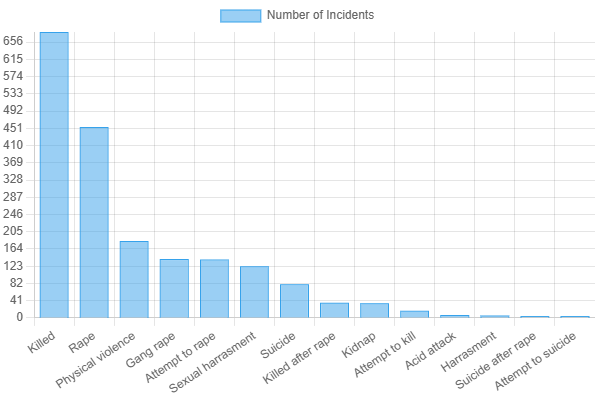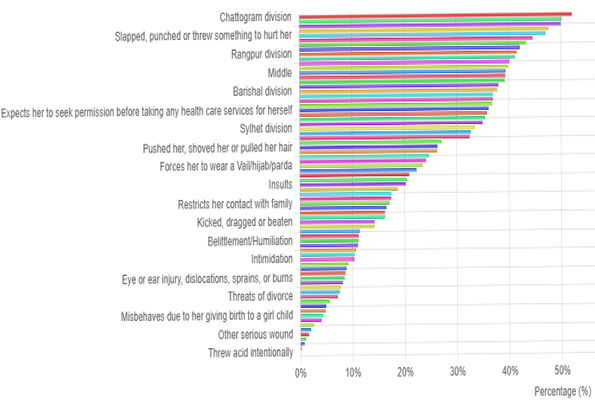VAW Incident Update
DAILY
-
-, -MONTHLY
-
-, -YEARLY
-
-Incident Type Breakdown
| Incident Type | Current | Last Year | Change |
|---|---|---|---|
| Loading data... | |||
| Incident Type | Current | Last Year | Change |
|---|---|---|---|
| Loading data... | |||
| Incident Type | Current | Last Year | Change |
|---|---|---|---|
| Loading data... | |||
updates collected from news reports published in Prothom Alo, Kaler Kantho, Ittefaq, Inquilab, bdnews24.com, Sangbad, Bhorer Kagoj, Samakal, Desh Rupantor, Ajker Patrika, Amader Somoy, Jugantor, Bangla Tribune, jagonews24.com, Dhaka Post, Purbokone, Azadi, cvoice24.com, Suprobhat Bangladesh, Purbodesh, and Bangla Tribune.
2024: VAW at a glance
(tap or hoover on map)
this is the tooltip
Note: number of perpetrators does not include all the incidents
Insights from News

Incidents of violence against women across Bangladesh have been compiled and visualized in this section. The data are collected from verified news reports published in multiple national and regional news outlets, ensuring timely and diverse coverage of incidents from all corners of the country.
Each entry in the hub includes detailed information such as the age of the victim, age of the perpetrator(s), location (district and upazila), and the number of perpetrators involved. This granular data enables users to explore patterns and trends based on geographic distribution, age demographics, and other relevant factors.
By transforming raw news data into structured, searchable insights, the VAW Data Hub serves as a vital tool for journalists, researchers, policymakers, and activists. It aims to raise awareness, support evidence-based interventions, and advocate for stronger measures to prevent violence against women in Bangladesh.
Survey Data
The data hub includes data from the Violence Against Women Survey 2015 conducted by the Bangladesh Bureau of Statistics (BBS). This nationally representative survey remains one of the most comprehensive studies on the prevalence, forms, and impact of violence against women in Bangladesh.
By incorporating the BBS survey data, the hub provides a foundational baseline to understand the broader context and long-term patterns of VAW in the country. The survey covers a wide range of indicators, including physical, sexual, psychological, and economic violence, as well as women's experiences with seeking help and reporting incidents.
